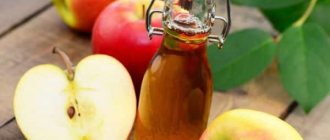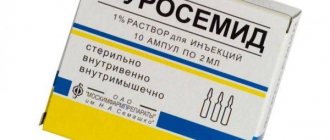Antihypertensives (from other gr. hypo decrease and lat. tensio tension, pressure) are medications that lower blood pressure and are used primarily for the treatment of hypertension. Therefore, they are also called antihypertensive drugs.
Arterial hypertension is distinguished as primary (hypertension or essential hypertension) and secondary (symptomatic).
The causes of hypertension are not completely known. An important role in the development of the disease is played by prolonged psycho-emotional stress, chronic stress, age-related decrease in vascular elasticity, excessive consumption of table salt and a sedentary lifestyle.
Secondary (symptomatic) arterial hypertension occurs due to an adrenal tumor. The tumor secretes large amounts of adrenaline, which is released into the blood, causing an increase in blood pressure. Also, symptomatic arterial hypertension can occur with kidney disease. In such cases we talk about renoprival hypertension. Secondary hypertension can be a symptom of other diseases.
Classification of blood pressure drugs
- ACE (angiotensin-converting enzyme inhibitors). Prevents the production of angiotensin (a substance with a vasoconstrictor effect). Dilate arteries, lowering blood pressure.
- ARBs (angiotensin II receptor blockers). They inhibit those receptors to which angiotensin binds, dilating blood vessels and lowering blood pressure.
- Calcium antagonists/calcium channel blockers. They prevent the penetration of calcium ions into the cells of blood vessels and myocardium (heart muscle), preventing contraction mechanisms. The arteries relax, which leads to an increase in their diameter and a decrease in blood pressure.
- Diuretics (diuretics). They normalize blood pressure by removing excess fluids and salts from the body. Loop diuretics are prescribed primarily in hospital settings.
- Beta adenoblockers affect the production of hormones that increase heart rate. They normalize heart rate by influencing the sympathetic nervous system and blood pressure levels.
Basics of treatment of hypertension
Arterial hypertension is a dangerous disease that requires treatment. High blood pressure damages the vessels of the brain, heart and kidneys, overloads the heart, and leads to the progression of atherosclerotic changes in blood vessels. These disorders lead to heart failure and so-called cardiovascular disasters - stroke and heart attack.
When treating arterial hypertension, one always strives to act primarily on the cause that causes it. If the cause is unknown or cannot be eliminated, symptomatic treatment is performed.
The main goal of treating hypertension is to reduce blood pressure to the so-called target (safe) numbers. Most experts in the field of cardiology consider systolic (upper) pressure above 140 mm dangerous. rt. Art.
The selection of an antihypertensive drug by a doctor is usually carried out empirically (experimentally). One of the so-called drugs of choice is prescribed in a minimum dose with constant monitoring of blood pressure. If the selected dose is ineffective, it is increased to the next dose of this drug. If the target blood pressure figures cannot be achieved, a second antihypertensive drug with a different mechanism of action and a different point of application of physiological blood pressure maintenance is prescribed in parallel. This type of therapy for hypertension is called combination therapy.
Side effects of blood pressure pills
Any medicinal substance, no matter how high-quality and expensive it is, can lead to side effects. Some unwanted effects, such as various allergies, cannot be prevented.
Children, the elderly, pregnant women, and patients with liver and kidney damage are at risk for developing side effects.
Side effects from different groups of drugs:
- Diuretics - dehydration, water-electrolyte imbalance, decreased blood pressure, arrhythmias, photosensitivity, allergies.
- Beta adenoblockers - bradycardia, vertigo, migraines, increased circulatory failure, decreased blood pressure, nausea, bronchospasm, heart block, sleep disorders, depression.
- Calcium antagonists - bradycardia, AV block, decreased blood pressure, angina pectoris, dizziness, hot flashes, tinnitus, runny nose, abdominal pain, nausea, edema, constipation.
- ACE inhibitor - dizziness, hypotension, weakness, tachycardia, dry cough, shortness of breath, nausea, diarrhea, abdominal pain, rashes, angioedema, itching, asthenia, blurred vision, electrolyte imbalance, loss of appetite.
Review of popular Omega manufacturing companies
Let's take a closer look today at the most popular producers of polyunsaturated fatty acids and find out whether any Omega allows you to compensate for the required daily dose.
Triple Omega-3, 950 mg, 30 capsules, Evalar
- Dietary supplement from a popular Russian brand that has proven itself in the pharmaceutical market for more than 25 years.
- High content of Omega-3 in one capsule: EPA no less than 550 mg (92%), DHA no less than 230 mg (33%), PUFA 950 mg (48%).
- The raw materials used are highly purified fish oil from sardines, mackerel and anchovies from BASF, a world-famous supplier (Germany, Norway).
- Additional components: vitamin E (a mixture of natural tocopherols).
- The capsule shell is made of gelatin and glycerin.
- There are no contraindications for use by pregnant and lactating women.
- Low Omega-3 content - only 300 mg: EPA - 180 mg and DHA - 120 mg + fish oil concentrate.
- Raw materials used: fish oil obtained from the whole body of mackerel, anchovies and sardines.
- Additional components: vitamin E (tocopherol acetate), soy derivatives.
- Use during pregnancy or lactation is permissible only after consultation with your doctor.
| PROS: | MINUSES: |
| Does not have a pungent odor More than 2 times cheaper than analogues. | Large capsule size |
Triple Omega-3 950 mg, EPA and DCG, 30 capsules, Evalar
868 ₽
Dietary supplement NOT A MEDICINE
Omega-3, 1400 mg 100 capsules, NOW
| PROS: | MINUSES: |
| Gelatin capsules with enteric coating (enteric-soluble), which avoid a fishy aftertaste. | Low Omega-3 content per capsule |
Norwegian cod liver oil, 100 capsules, Solgar
799 ₽
Dietary supplement NOT A MEDICINE
- Premium dietary supplement from an American manufacturer.
- High Omega-3 content per capsule: EPA 504 mg, DHA 378 mg + marine fish oil concentrate.
- Raw materials used: muscle tissue of small fish species (anchovies, sardines, mackerel).
- Additional components: vitamin E (a mixture of natural tocopherols).
- The capsule shell is made of gelatin and glycerin.
- Use during pregnancy or lactation is permissible only after consultation with your doctor.
- Composition: Omega-3 PUFA 980 g, the manufacturer does not indicate which fatty acids Omega-3 is represented by and their percentage. Also, it is not in the instructions, not on the company’s official website, it does not indicate what raw materials the manufacturer uses.
Triple Omega-3, 50 capsules, Solgar
| PROS: | MINUSES: |
| No pungent odor Shelf life - 3 years | High price Large capsule size Glass, impractical packaging |
Omega-3, 1400 mg/ 980 mg, 30 capsules, Nature's Bounty
| PROS: | MINUSES: |
| No specific smell or aftertaste. | There is no exact composition, % ratio of fatty acids Glass, impractical packaging There are no instructions for use during pregnancy and lactation. |
Omega-3, 980 mg, 30 capsules, Nature's Bounty
1 763 ₽
Dietary supplement NOT A MEDICINE
- Quite low Omega-3 content - 260 mg: EPA -160 mg and DHA - 100 mg + saturated fatty acids - 0.3 g, monounsaturated fatty acids - 0.2 g, polyunsaturated fatty acids - 0.4 g.
- Fish oil 69.4%
- The manufacturer did not indicate in the available sources what raw materials were used.
- Additional components: vitamin E (tocopherol extract).
- Contraindicated for pregnant and lactating women.
Fish oil, 60 capsules, VPLab
| PROS: | MINUSES: |
| No specific smell or aftertaste. | Low content of Omega-3 fatty acids No indication of raw materials used |
New drugs are the safest
New generation medications for hypertension cause fewer side effects and are the safest.
Advantages:
- The composition includes active ingredients that reduce the negative effects on the body. At the same time, they do not lose their effectiveness.
- The effect of one tablet is enough for at least a day, because new generation drugs have a cumulative effect.
- The medications contain substances that have a positive effect on all organs and vital systems.
Foods containing essential vitamins and minerals
To compensate for the lack of vitamins and minerals in hypertension, it is important to consume foods of natural origin.
- Potassium – found in nuts and raisins. In addition, this trace element can be obtained by drinking black and green tea.
- Calcium – present in nuts and rolled oats. Dairy products, especially cottage cheese, are also rich in it.
- Sodium is found in table salt, but it should be used with caution, as it provokes the formation of edema.
- Phosphorus is present in fish and all types of meat.
- Magnesium – rich in it: legumes, cereals, cereals (especially buckwheat). In addition, it is important to eat greens: sorrel, parsley, celery, basil, dill.
- Vitamin C - found in currants (of any type, but most of all in red and white), citrus fruits, sea buckthorn, rose hips.
- Retinol acetate – vegetables should be included in the diet: pumpkin, cabbage, tomato, bell pepper, asparagus. In addition, this component is present in greens.
- Thiamine - can be obtained by consuming wholemeal bread and brewer's yeast.
- Riboflavin – found in hard cheeses and dairy products. In addition, it is important to include in the diet: boiled eggs, liver, meat, cereals, rice.
- Choline – present in legumes and cereals. In addition, there is a lot of it in hard cheese and cottage cheese.
- Pyridoxine - found in the following foods: eggs (better to eat boiled than raw or fried), red fish, any types of cheese, high-fat cottage cheese, pork and beef liver, potatoes, white and Brussels sprouts.
- Cyanocobalamin – present in fruits: apricot, grapes. It is also found in grape leaves, raisins and dates.
- Tocopherol - can be obtained by consuming: olive and cottonseed oil, cereals and legumes.
- Rutin - present in some berries and fruits: citrus fruits, currants, cherries, rose hips, chokeberries, chokeberries.
- Folic acid – found in fish oil and white meat. In addition, the component is present in fish.
- Omega 3 – present in fish.
- Omega 6 – there is an increased content in egg whites and butter.
In addition, patients with hypertension should consume foods and drinks containing taurine (tuna, turkey meat, eggs, red fish, chicken). Taurine helps lower blood pressure and restores the patient's performance.
If you develop hypertension, you should stop drinking alcohol, as they increase blood pressure.
To get rid of hypertension forever, drug treatment is not enough. It is important for a person to follow a strict diet, which consists of consuming foods with a high content of vitamins and microelements. In addition, for hypertension, taking multivitamin complexes is recommended.
What should normal blood pressure be and how to treat hypertension.
October 20, 2021
1386
5
1
Content
- Blood pressure: what is it?
- Pressure standards
- Blood pressure norms by age
- How to measure blood pressure correctly?
- Why can pressure “jump”?
- How to choose blood pressure pills
- The most popular blood pressure pills
- Veroshpiron
- Verapamil
- Captopril
- Bisoprolol
- Losartan
Each person's blood pressure norms are individual; this indicator is influenced by many factors. Nevertheless, there are average medical indicators that need to be guided by. Medical pressure standards help the doctor determine that there is a health problem.
Pressure can change depending on a person’s age, time of day, etc. We tell you what normal blood pressure a person has at a certain age, why it changes, and what is considered a deviation.
How to measure blood pressure correctly?
At home, it is easier to use an automatic tonometer, because semi-automatic and especially manual tonometers require certain skills. Rules for measuring pressure:
- Before measuring blood pressure, you need to eliminate emotional and physical stress, calm down and relax as much as possible.
- Do not smoke before taking measurements.
- Sit comfortably in a chair with back support.
- Place the arm on which you are putting the cuff on at heart level (that is, it is better to do this at the table).
- Do not talk or move during the measurement.
- It is advisable to measure the pressure on both hands (first one, then after 10 minutes - the second).
If you find a significant deviation from the norm, be sure to consult a doctor. If he suspects hypertension (high blood pressure), he will need to take special medications.









